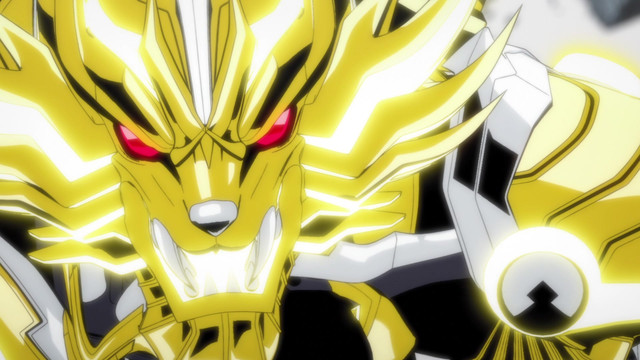
- Episodes : 24
- Genre : Action, Demons, Fantasy, Supernatural
- Airing Date : Oct 7, 2017 – Mar 30, 2018
- Producers : MAPPA
Contains Spoilers
Garo: Vanishing Line Introduction and Story
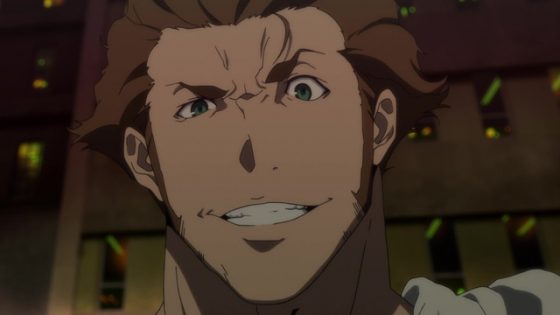
In the futuristic US-based Russell City, its citizens are being terrorized by horrors, evil creatures of the night that prey on their dark emotions. They are after Sophie, a pre-teen orphan who is searching for Martin, her long-lost brother. Rumors are he went to the lost city of El Dorado to find work. Under the protection of a man named Sword, the present bearer of the golden Garo armor, they go on a quest to find El Dorado and stop the horrors from carrying out their grand scheme.
Assisting Sword and Sophie are two Makai Alchemists, Gina, and Luke. Gina sort of represents a Fujiko Mine-like (from Lupin III) character in this series while Luke serves as a foil to Sword. In conjunction with Garo tradition whether they are tokusatsu or anime form, they are still assisted by Zaruba, a madou ring that can detect and give information on horrors. But this time, Zaruba gets a major upgrade where he can also serve as something like an AI to Sword’s motorcycle.
What We Liked About Garo: Vanishing Line
For starters, you are not required to watch the previous Garo anime or tokusatsu installments to enjoy Vanishing Line. Each anime series tells a different story with different characters (with the exception of Zaruba). They all follow the same formula but have different elements to ease in new viewers and to keep familiar viewers interested. The first Garo anime series took place in the dark ages of Europe, the second was a story about medieval Japan, and now with Vanishing Line, you get a fresh story taking place in a futuristic America that portrays both urban and rural parts of the country.
For those interested, you are getting an excellent balance of action and horror. If you love something with a dark flavor but with the appropriate touch of light, this is the series that knows how to deliver on that.
Discussion Time
Beyond its exciting action, this series delivers a solid seiyuu cast, a great supporting cast, a rad soundtrack, and offers a unique and realistic critique of human nature. While some supporting characters do get some background and development, Sword, the main character, has very minimal exploration but his lack of development is justified via tabula rasa. Beyond that, his foundational qualities are nothing unique in terms of anime heroes. As for Gina, while she does play her role, other than her buxom looks and abilities, by the end of the series, we learn practically nothing about her.
Why You Should Watch Garo: Vanishing Line
1. Solid Voice Cast
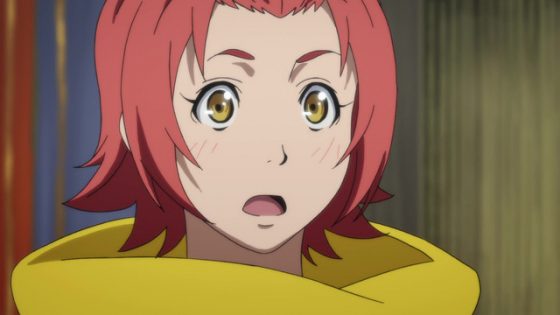
The Japanese version has a who’s who in the world of seiyuu. For example, Rie Kugimiya performs Sophie, and her brother is voiced by Romi Park. In case you didn’t know, they also happen to the voices of Ed and Al in Fullmetal Alchemist. Despite once again playing siblings, their performances and the dynamics of their relationship are significantly different. Kugimiya excellently captures Sophie’s age and vulnerabilities. As Martin, Park plays him as someone who has well-intended motivations, but sadly naïve and corrupted.
Some of you seiyuu buffs are likely to recognize the multi-talented Tomokazu Seki as the voice of Sword. Seki can do numerous voices such as the comical Chichiri in Fushigi Yuugi with this playful high-pitched voice, or do tragic characters like Kamui in X/1999 with a low one. As Sword, he is very serious about his duties as a Makai Knight but knows when to have a good time and Seki does a great job of capturing Sword as someone who is content with where he is in life.
Returning from other previous installments of Garo are Daisuke Namikawa, Takaya Hashi, and Hironobu Kageyama as Zaruba. Last, the main villain is voiced by Ryuusei Nakao, who you may recognize the voice of Freeza from Dragon Ball Z.
2. Rad Soundtrack
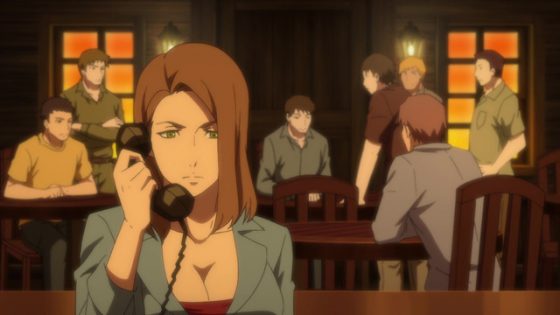
If there is one reason to enjoy this series or the Garo brand as a whole, it has to be its heavy-duty soundtrack. It knows how to use dark percussions and acoustics to settle you into its horror aspects, and heavy guitar riffs to suit the exciting action when Sword kicks some ass. Beyond that, the opening theme is provided by the JAM Project, consisting of Hironobu Kageyama, Masaaki Endo, Hiroshi Kitadani, Masami Okui, Yoshiki Fukuyama, and Ricardo Cruz, who all have a history of contributing to the soundtracks of anime and tokusatsu series.
In addition to Vanishing Line, JAM Project has been part of the franchise since its inception as a tokusatsu series in 2006.
3. Masterfully Critiques the Dark Side of Humanity
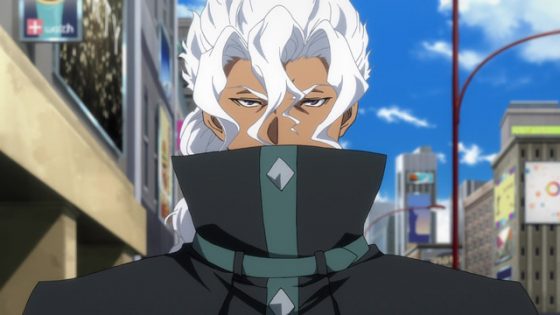
Though the main job of our heroes is to protect ordinary people from horrors, the series also does a great job of exploring other tragic instances that can and do happen in real life. One episode deals with domestic abuse, another deals with gang violence, and the heroes visit a town that is ruled by a mob mentality due to incidents in the area that the authorities didn’t do anything about it.
In this series, the horrors are born from the dark side of human emotions, and the horrors use that to possess the humans. Due to this vicious cycle, it truly makes viewers wonder if the true enemy is humanity itself.
4. A Great Supporting Cast
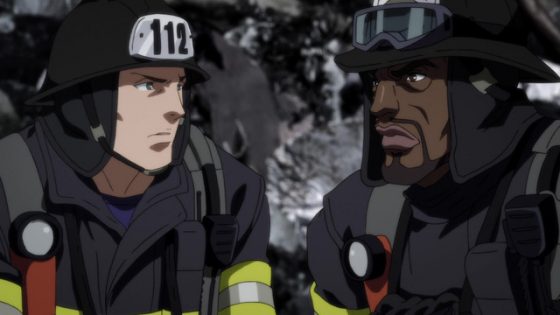
The series offers an amazing supporting cast and in fact, most of the development goes to them. With Luke, he is the polar opposite of Sword and the series does a great job of demonstrating why. While Sword has an easygoing personality and enjoys being around others, Luke feels members of the Makai Order should keep their distance for privacy and protection reasons. Viewers can understand his reasoning, it is also because of the betrayal of his father, who serves as one of the villains of the series, that makes him that way. Then in one episode, Luke goes on his own personal journey to come to terms with his past and in doing so, he finally embraces Sword’s positive outlook.
As for Sophie, her vulnerabilities as a young lady in her situation are excellently and realistically demonstrated. As she spends more time with Sword and Gina and always having to be protected by them, it comes to a point that she doesn’t want to hold anyone back and wants to be of contribution. By the time the series reaches its climax, she gets to shine in how the events of the series shaped her and her resolve at the end shows that she wants to make a difference.
Why You Should Skip Garo: Vanishing Line
1. Cliché Hero
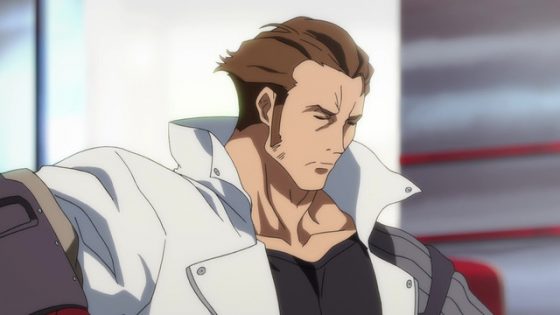
Though Sword is a lot different from his anime predecessors, his personality and characteristics are very typical of Shounen heroes. Like Goku and Luffy, he tends to eat a lot but his muscular frame and his physically demanding duties do justify his appetite, and probably to showcase that he’s American. In addition, he does have some perverted qualities like Master Roshi and Lupin III. He enjoys the site of breasts (let's say a minimum size of double d’s) and offers a prayer of thanks whenever he looks at them. At the same time, his positive outlook is also a common quality in Shounen, on the other hand, the atmosphere of the series and the people he interacts with do a great job of making it work.
2. Lack of Sword’s and Gina’s Backstory and Development
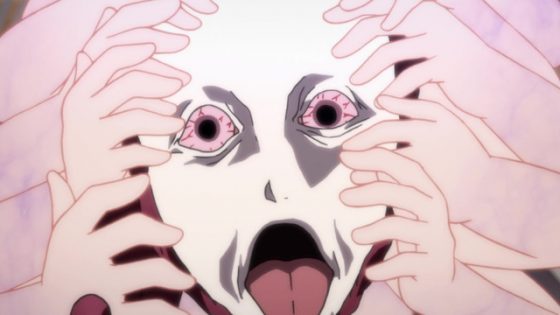
While Sophie and Luke get most of the development, Sword and Gina get little to nothing but the series does have a way of getting around this. Towards the end, we know some minimal parts of Sword’s background (such as his real name) and what you learn about him does play a significant part of the story, but we don’t get to see how he obtained the Garo armor. As for his development, tabula rasa, more or less meaning he’s a developed character by the time he’s introduced, justifies why his character doesn’t develop in the series—most audiences can accept that.
He is very aware of his role and embraces it. On the same token, it is implied that he got his armor as a birthright but the series offers nothing other than that. Although some fans are not fond of flashbacks in anime, the series could have taken time to show more of Sword’s training as a Makai Knight and see how the Makai Order functions in the timeline of this anime.
As for Gina, she’s also subjected to the rules of tabula rasa. She’s someone who is very skilled at what she does and she deeply cares for Sophie and would do anything to protect her. While she does play her role excellently, we learn nothing about her. We don’t know what motivated her to be a Makai Alchemist or how she got her rad car.
Final Thoughts
While Sword and Gina are provided no development and bare minimum background, it doesn’t mean they don’t have any use or role. As love interests, they do have great chemistry and accurately compliment each other’s qualities, and by no means does the series force them to become lovers just for the sake of it. Their personalities are still excellently highlighted throughout the series as they protect Sophie and help people on their journey to El Dorado.
Despite their playful natures, the series effectively demonstrates that Sword and Gina are very mature individuals who know what they’re doing and have life experiences that they can share with the people they encounter. Some viewers can agree that they are used as a proxy to help develop Sophie and Luke, and that’s ok because it still makes them useful and active characters.
So if you love action, horror, and relationship development, we strongly recommend this series. If you want to watch the prior anime series, you can do so at your own discretion but we promise every time you watch a Garo series, while some things do remain the same, you’ll always get something different. And for you, Dragon Ball fans that love Hironobu Kageyama now is your chance to hear him play a character.
Recommended Post
Garo: VANISHING LINE - Fall 2017 & Winter 2018
Recommended Post



